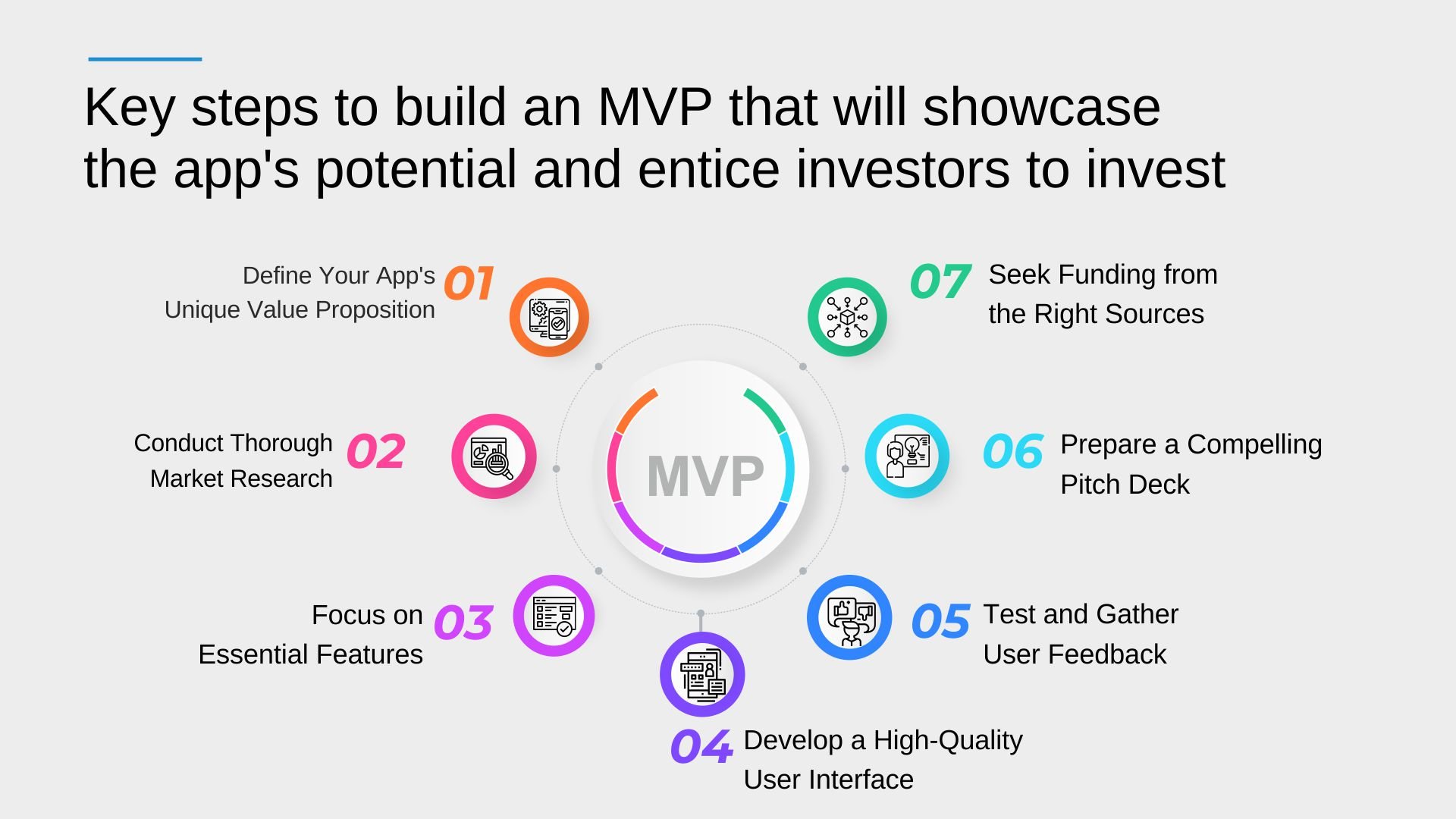Building a mobile app from scratch and raising funds for its development can be a challenging endeavor. However, adopting a strategic approach and leveraging the power of a Minimum Viable Product (MVP) can significantly increase your chances of attracting investment. In this blog, we will explore the key steps to build an MVP that not only showcases your app’s potential but also entices investors to support your mobile app venture financially.

1. Define Your App’s Unique Value Proposition
To attract investors, it is crucial to have a clear understanding of your mobile app‘s unique value proposition. Identify the problem your app aims to solve and how it differentiates from existing solutions in the market. Craft a compelling story around your app’s benefits and how it addresses a real pain point for users. Investors are more likely to support an app that offers a unique value and demonstrates potential for widespread adoption.
2. Conduct Thorough Market Research
Before building an MVP, conduct thorough market research to validate your app idea and identify your target audience. Analyze the market landscape, competitor offerings, and user needs. Gathering insights about user preferences, pain points, and behavior will help you refine your app’s features and design. This data-driven approach will strengthen your pitch to investors, as it demonstrates a deep understanding of the market and its potential.
3. Focus on Essential Features
An MVP should include the core features that showcase the app’s value proposition while keeping development costs and timelines manageable. Prioritize features that solve the primary problem and provide a meaningful user experience. By focusing on essential features, you can quickly develop a functional prototype that investors can interact with. This interactive experience enables them to visualize the app’s potential and increases the likelihood of securing funding.
4. Develop a High-Quality User Interface
Investors are not only interested in the functionality of your app but also in its visual appeal and user experience. Design an intuitive and visually appealing user interface that aligns with your target audience’s preferences. Ensure that the app’s navigation is seamless and that users can easily understand and interact with the core features. A polished user interface demonstrates your commitment to delivering a high-quality product, which can instill confidence in potential investors.
5. Test and Gather User Feedback
Once you have developed your MVP, conduct rigorous testing with a group of early adopters or beta users. Gather their feedback on usability, functionality, and overall satisfaction. This feedback will help you identify any shortcomings or areas for improvement in your app. Investors are more likely to invest in an app that has undergone user testing, as it shows a commitment to iterative development and a willingness to refine the product based on user needs.
6. Prepare a Compelling Pitch Deck
Craft a well-structured and compelling pitch deck that highlights the key aspects of your mobile app and its market potential. Include information about the problem you are solving, your target audience, market size, competitive analysis, and your monetization strategy. Showcase your MVP’s features and highlight any user feedback or traction you have gained during testing. A concise and visually appealing pitch deck will capture investors’ attention and make a strong case for funding your mobile app venture.
7. Seek Funding from the Right Sources
Identify potential funding sources that align with your app’s niche and target audience. This could include angel investors, venture capital firms, crowdfunding platforms, or even industry-specific grants and accelerators. Tailor your pitch and approach to each funding source, highlighting how your app aligns with their investment goals and criteria. Networking events, pitch competitions, and industry conferences can also provide opportunities to connect with potential investors.
Conclusion
Building an MVP that raises money for your mobile app requires careful planning, market research, and a focus on delivering a compelling user experience.
Topics: technologies, DevOps, App Development, workflow automation